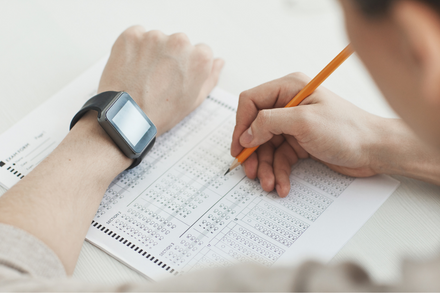A Brief Guide to the Amazon Control Systems Assessment
The Control Systems Assessment is a test that Amazon uses to evaluate the professional skills and knowledge of candidates for Team Lead and Control Systems Technician roles.
Ramsay Corporation is, one of the most prominent providers of professional and technical tests in the world, conducts this test for Amazon.
The test is intended to measure candidate job-related skills and requires theoretical knowledge and experience in a set of subjects.
Almost all Amazon technical assessments require the candidate to have knowledge in a variety of technical fields, reflecting the reality that Amazon employees must be able to resolve all manner of technical issues.

Test Administration
If your resume is selected by Amazon, you will receive an invitation for a test. You must take the test within no more than five days from the date of receiving the notice.
This challenging Amazon assessment is taken online, in a monitored environment provided by ADIA. Both you and your screen will be observed by a human proctor throughout the entirety of the test.
Test results will be sent to candidates after three business days. Candidates who pass the test will be scheduled for an interview.
Test Overview
Unlike the Maintenance Technician assessment, which includes both electrical and mechanical subjects, the Controls Systems assessment focuses primarily on electrical and electronics-related subjects.
The test covers 8 subjects:
- Process Control and Networking.
- Schematics, Electrical Print, and Logic Reading.
- Computers, PLCs, and DCS.
- Electrical Theory.
- Power Distribution.
- Mechanical Elements.
- Automation and Robotics.
- Motors.
The assessment takes about an hour and a half to complete and contains questions where the candidate must choose one out of 4 possible answers for each question.
Below you will find a brief overview of each section, with some sample questions and answers.
Process Control and Networking Sample Question
This section covers several kinds of devices, for example, fieldbuses and I/O field devices.

The correct solution is A.
Manchester is a code used for data encoding. Manchester code uses two phases, 1 and 0, which means it is a form of binary keying.
Schematics, Electrical Print, and Logic Reading Sample Question
In this section, the assessment evaluates your ability to understand schematics, for example, control schematics, mechanical prints, and block diagrams. This subject comes up in other types of Ramsay professional tests.

The Correct solution is A.
Because M2 is not connected to the forward button we can rule out answers C and D. The forward button activates M1, but the M1 connection continues energizing the forward circuit even when the button is no longer pressed.
Electrical Theory Sample Question
Here the assessment covers basic electrical theory subjects, for example, electrical circuits, control, series, and parallel circuits, and so on.

B is the correct answer.
SPDT stands for Single Pole Double Throw Relay. Below you can see the diagrams for the other types of relays – SPST and DPDT:

Mechanical Elements Sample Question
This section covers mechanical elements of electrical currents, for example, transducers, pneumatic circuits, and solenoids.

Increasing the current will create a more powerful magnetic field, which increases the actuating force generated by the solenoid.
The other answers will either reduce the actuating force, or not affect it at all, so B is the correct answer.
Computers, PLCs, and DCS Sample Question
This part of the test is about hardware programming – registers, ladder logic, and so forth.


A is the correct answer. See the diagram below for the analysis

Power Distribution Sample Question
This section covers all elements of power distribution systems, from relays to transformers and from fuses to UPS devices.

The answer to this question is C. The minimum rating for a fuse must exceed the system’s normal operating current.
For a system with multiple appliances connected, we must calculate the total current as of the total the current consumption of all three appliances connected to the system.
This can be done by calculating each appliance’s consumption by dividing the power (in watts) by the voltage (in volts, of course), with the result expressed in amperes.
In this case, the appliances consume 5A, 7A, and 3A, respectively, or a total of 15 amperes. Since the minimal fuse rating must be higher than this, our answer is 20A.
Motors Sample Question
This section covers the operation and control of electric motors.

The correct answer is B; the difference between the synchronous and asynchronous speed is referred to as slip.
Automation and Robotics Sample Question
Here the test covers basic subjects related to automation and robotics. Control, HMI, and safety rules make up most of the question topics.

The answer is D, teaching pendants are primarily used for programming industrial robots.
© 2024 Amazon Jobs near me. All rights reserved. Amazon and other trademarks are the property of their respective trademark holders
and are not affiliated with this website. For more information see terms and conditions.